Below is a recap of some of the highlights from their discussion, which is available to stream in full here:
A Look Inside the Market – How AI Is Being Used in Healthcare
According to Coleman, AI is becoming so prevalent in healthcare that it is easy to lose sight of what AI really is. Technology has greatly improved quality and performance when it comes to capital equipment and imaging in healthcare, but there is a ceiling to how much improving software and imaging technology actually yields ROI for providers. “At some point, AI should deliver on the promise of getting us the same quality image for half the cost of the machine. That will be very disruptive in the imaging and the capital spaces,” Coleman said.
The use of AI also raises concerns about job displacement. Coleman notes that we must be very careful to focus on people and quality so that AI doesn’t just become one more cost-cutting measure, as opposed to a quality and care outcome improvement measure.
Riley echoed Coleman’s sentiments, saying that out of the hundreds of startups they look to incubate each year at Henry Ford, every single one has an AI component. Riley shared a unique case study about a wearable patch with an AI component that is being used to monitor vitals and alleviate spaghetti syndrome (patients who become entangled in tubes and wires) throughout the entire patient care journey, but particularly in the operating room.
“We’ve seen all sorts of wearables. However, they didn’t have the same breadth of capabilities this technology had,” Riley noted. After a wildly successful pilot launch, they are looking to feed the AI with de-identified data, which is critical to remain competitive in a very saturated landscape.
Returning To Profitability – Using Innovation as a Tool
As healthcare organizations return to profitability following several years of the COVID-19 pandemic, Riley shared two driving factors that impede their ability to do so: revenue generation and nursing costs. Despite the difficulties of running a system amid pandemic conditions, Henry Ford remained profitable by focusing on what they were good at from a revenue-generating standpoint—shifting more personnel into their procedure and operating rooms. They also proactively pursued retaining their nurses by understanding how to keep them feeling happy, safe and valued.
“I think what we’ll be seeing in the future is how we can leverage things such as robots to reduce unnecessary tasks that will keep our nurses happier to help us save time and money,” Riley predicted. “Really, it takes a full circle approach to keep patients and nurses safe, and to eliminate unnecessary tasks.”
According to Coleman, innovation should be applied to any organizational objective a healthcare system has, regardless of whether there is a technology component. “I’d love to see a focus on how innovation improves population health, quality of care and outcomes, and nurse and physician burnout. A lot of the attention now is given to how much money the next technology can make,” Coleman added.
In agreement, Riley went on to explain one of the programs her team offers, in which they partner with local churches. They go into the community and set up a table, not intending to profit from patient revenue but trying to promote public health. “Providing health care delivery services and education is a great way to help health systems not only improve on their costs, but improve patient care, patient outcomes, and really focus on our mission of delivering the highest quality, safest care possible,” Riley said.
The Incubation of New Technologies – Its Role in Healthcare and Improving Quality of Care for Patients
When talking about venture capital funding, one of the most prevalent topics or technologies is 3D printing, Coleman noted. It’s truly innovative because there is essentially no more custom type of device than a 3D printed device. “Take a knee or hip implant, for example,” Coleman said “you can have more than just a best-fit size based on the current assortment. But, instead, have a custom-made, built-for-your-hip implant—that’s pretty exciting.”
Riley added that Henry Ford Innovation started 3D printing intensely nine to 10 years ago and started in the structural heart space. They would take a CT scan or an MRI and turn it into a 3D life-size replica for valve replacements, which allows you to see anomalies that you wouldn’t see in 2D.
That process, which is now patented and licensed to a group called Materialise, is now being used globally. Studies have shown that the direct costs of 3D printing were not cheap for patients but saved 30 minutes on the operating table. “That’s 30 minutes less of that space being utilized,” Riley said. “So, 3D printing ended up being a huge cost-saver for us in the long haul.”
She said it was very exciting to see how their patients were recovering and performing during the procedure.
What Innovations Are in Store for the Near Future
Technology-wise, Riley predicted that we’d start to see improvements on the administrative side. “The funny thing about healthcare is that, in many ways, we’re five to 10 years behind everyone else.” She said that healthcare is getting up to speed with the hospitality and automotive industries, pointing to enhancements in the patient stay experience and supply chain revenue cycle.
Coleman would like to see manufacturers and health systems do a better job of collaborating on innovations. Companies are trying to navigate how to be a part of the conversation without making bets or risking too much money in speculative M&A. “It’s a dance that many companies are struggling with right now,” he said.
Coleman and Riley agree that healthcare is a complicated field to work in, but there is great potential for innovation.
If you have any questions on the topics discussed or would like to pick the brains of Josh Coleman or Brie Riley further, don’t hesitate to reach out.


